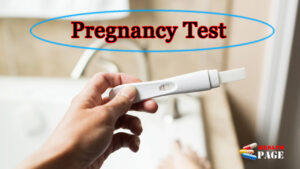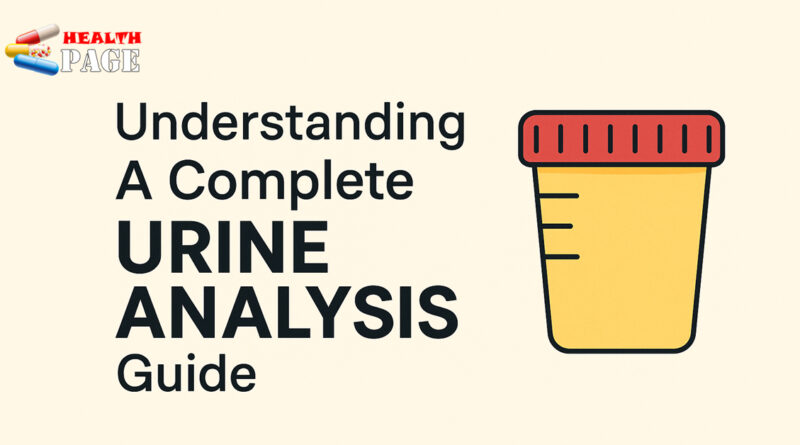Understanding A complete URINE ANALYSIS guide
Any more or less serious illness cannot be avoide without a urine test. It is a real mirror of the body’s condition. So let’s put aside the embarrassment and thoroughly understand what the URINE ANALYSIS numbers on the form you received mean.
General or clinical urine analysis
Here is a General and Clinical Urine Analysis Chart organized into blocks with detailed information for each parameter:
🟨 General Urine Analysis Chart
| Parameter | Normal Range | Description |
|---|---|---|
| Color | Pale yellow to amber | Determined by urochrome pigment. Darker color may indicate dehydration. |
| Appearance | Clear | Cloudy urine may indicate infection, crystals, or contamination. |
| Odor | Slightly aromatic | Strong/foul odor may suggest infection or certain foods/drugs. |
| Volume (24 hrs) | 800 – 2000 mL | Varies with fluid intake, activity, and kidney function. |
| Specific Gravity | 1.005 – 1.030 | Indicates urine concentration. Higher in dehydration, lower in renal failure. |
| pH | 4.6 – 8.0 | Influenced by diet, infection, or metabolic conditions. |
🟩 Chemical (Clinical) Urine Analysis Chart
| Parameter | Normal Range/Result | Clinical Significance |
|---|---|---|
| Protein | Negative | Positive may indicate kidney disease, infection, or preeclampsia. |
| Glucose | Negative | Positive suggests diabetes mellitus or renal glycosuria. |
| Ketones | Negative | Positive in uncontrolled diabetes, starvation, or ketogenic diet. |
| Bilirubin | Negative | Positive may suggest liver disease or bile duct obstruction. |
| Urobilinogen | 0.1 – 1.0 EU/dL | Increased in liver diseases, decreased in bile duct blockage. |
| Blood | Negative | Positive may indicate infection, stones, trauma, or menstruation. |
| Nitrites | Negative | Positive in bacterial UTI (Gram-negative bacteria like E. coli). |
| Leukocyte Esterase | Negative | Positive indicates presence of white blood cells – suggests infection. |
🟦 Microscopic Urine Analysis Chart
| Element | Normal Range | Clinical Interpretation |
|---|---|---|
| Red Blood Cells | 0-3 / HPF | Hematuria may indicate trauma, stones, infection, or glomerular disease. |
| White Blood Cells | 0-5 / HPF | Pyuria suggests infection or inflammation. |
| Epithelial Cells | Occasional | Increased in contamination or tubular damage. |
| Casts | Occasional hyaline | Various casts (RBC, WBC, granular) suggest kidney diseases. |
| Crystals | Few, variable | Dependent on pH; may suggest stone formation or metabolic disorder. |
| Bacteria | None seen | Presence suggests infection or contamination. |
| Yeast | None seen | Presence may suggest fungal infection (e.g., Candida species). |
Urine tests according to Nechiporenko
Urine analysis according to Nechiporenko is prescribed when the general results raise suspicion: there seems to be no obvious pathology, but leukocytes and erythrocytes are slightly elevated. For clarification, urine from the “middle of the stream” is needed: the jar is placed after the start of urination and removed until the end of the process. From this volume, the laboratory will take 1 ml and count the number of erythrocytes (the norm is no more than 1000), leukocytes (no more than 2000) and cylinders (no more than 20).
If one or more parameters are elevated, there is a pathology. Zimnitsky’s analysis is used if there is a suspicion of renal failure or kidney inflammation. Urine is collected over the course of 24 hours in 6 jars: one for urine excreted every 4 hours. In the laboratory, the amount and specific gravity are determined. The calculations are complex, but it is important that the volume of urine excreted during the day is greater than at night, and that the specific gravity of all portions fluctuates in a certain way.
Here are the most typical signs of trouble:
- 1010–1012. Urine density is equal to blood plasma density (isosthenuria). This happens if the patient has taken diuretics or has pyelonephritis outside the acute phase or renal failure.
- 2. 1002–1008. Urine density is less than blood plasma density (hyposthenuria). Signs of severe pyelonephritis are evident.
- More than 1025. Most likely, the blood is sharply thickened – this happens with dehydration, and in children – with uric acid diathesis.
In yellow tones
For the analysis, 100-200 ml of urine collected in the morning is enough. Carefully wash and scald a small jar with boiling water, wash the genitals so that the analysis is not contaminated. Women should not take the test during their period. Are you taking medications? Warn your doctor: some medications affect the results. There are no dietary restrictions, but you should not drink mineral waters before taking the test – they change the reaction of the urine.


